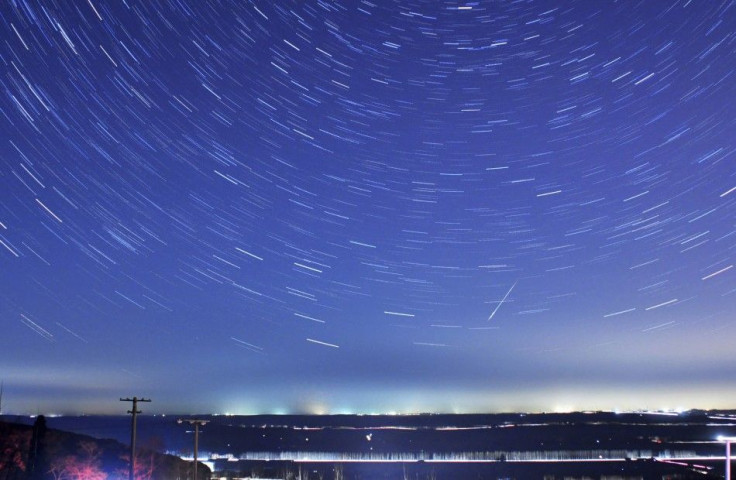Astronomical Events In January 2015: Quadrantids Meteor Shower, Full Moon, New Moon Plus Brightest Planets To Watch Out For

Mark your calendars, sky gazers! January sky is going to offer some dazzling views. The first weekend of 2015 will see year's first meteor shower. Here is a guide to all the important astronomical events to witness in the first month of the New Year. Also, find out which planets are easily visible in the January sky.
Quadrantids Meteor Shower: According to Sea and Sky's Astronomy Calendar for Celestial Events for Calendar Year 2015, Quadrantids meteor shower peaks on the night of Jan. 3 and morning of Jan. 4. It is said to be an "average" meteor shower that produces up to 40 shooting stars every hour radiating from the constellation called Bootes.
The meteor shower originates from "extinct" comet called 2003 EH1. As per the report, it runs for five days from Jan. 1 to Jan. 5 each year. Unfortunately, bright light from "nearly full moon" will create hindrance. It is suggested that the event is witnessed from a "dark location," away from city lights.
Space.com explains that Quadrantids meteor shower is named after a constellation named Quadrans Muralis or the Wall Quadrant. The constellation is no longer in use and was reportedly "incorporated into" Bootes in 1922. According to the website, the meteor shower will peak at 0200 GMT on the night of Jan. 3. It is said to be the "best time" to witness the spectacular view.
Full Moon: On Jan. 5, the Earth will get 2015's first full moon. The January full moon is referred to as Full Wolf Moon, Old Moon and the Moon after Yule. The moon reaches its full phase at 04:53 UTC when the moon is positioned directly opposite Earth.
New Moon: The first New Moon occurs on Jan. 20, 2015. According to SeaSky.org, the astronomical event will reach its peak at 13:14 UTC when moon will be positioned directly between the Earth and the Sun. It is said to be the time of the month that provides the best view of the objects that are otherwise not visible due to the moonlight. Sky watchers must make the best of this opportunity.
Besides the Quadrantids meteor shower, full moon and new moon, sky watchers can see the green comet Lovejoy lighting up the January sky. On Jan. 7, the comet will be closest to Earth at a distance of 70.2 million kilometers. According to RT.com, the movement of the comet can be easily observed by those living in Northern Hemisphere. It must be noted that Lovejoy will be seen again only after 8,000 years.
As for those who want to observe the planets in January Sky, look for Venus after the sunset according to Earth Sky. Mercury will be hard to locate, but it sits below Venus and might become visible during evening hours. Mars can reportedly be seen hanging "low in the southwestern twilight sky." Jupiter will be visible from evening to early morning hours in the eastern sky. Watch out for Saturn in the eastern sky before the sunrise.
For questions/comments regarding the article, you may e-mail the writer at j.kaur@IBTimes.com.au.




















